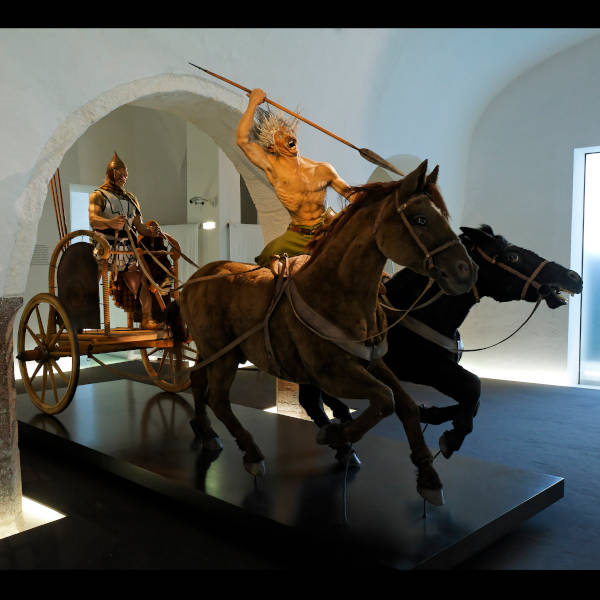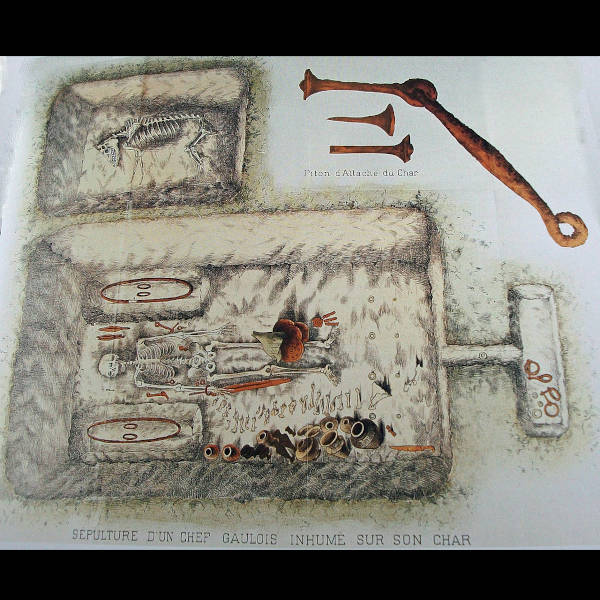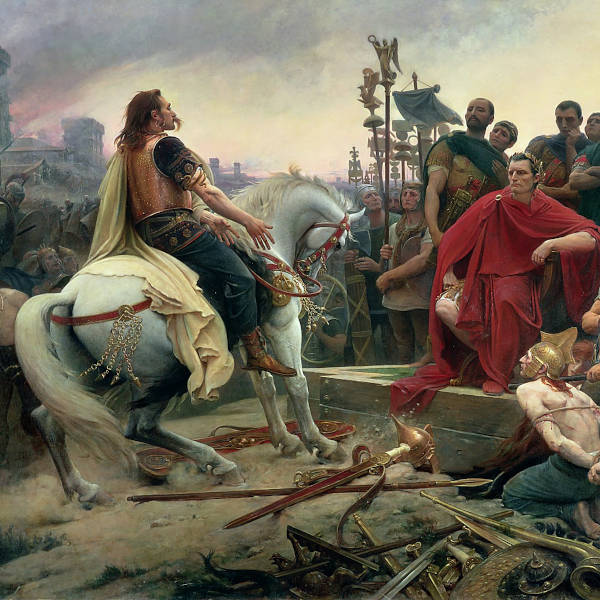DNA spotlight
Gallic Chariot Burials

Celtic warfare at the beginning of the La Tene period introduced elite warriors riding chariots wielding a new type of Celtic longsword. The chariots were typically two-wheeled and light and not used for a frontal charge - instead they would drive about in all directions to break the ranks of the enemy with the very dread of their horses and the noise of their wheels. As per Julius Caesar, these warriors would throw their javelins from chariots before abandoning them to fight on foot - and return to them in order to retreat or redeploy. Cavalry was primarily used for skirmishing and Celtic armies were mostly made of infantry wielding swords or javelins. Classical writers such as Strabo, Livy, Pausanias and Florus describe Celts as fighting like wild beasts with a frenzy.

The chariot burial was an Iron Age Celtic custom exclusively used in elite graves. The body would be placed down lying on their back atop a chariot. Over time the wooden chariot would decay and the horse harness and iron wheel covers and parts would remain. In Attichy a man, woman and child were found buried laying down on the chassis of their chariot between iron-rimmed wheels with pork or mutton offerings. Theis chariot was not ceremonial but well used showing axles in needs of repair. The individuals were accompanied by finery and clothing accessories which included bracelets, fibulae (as shown) and belt rings made of bronze iron or lignite. Typically men in such chariot graves were accompanied with their weapons, sword or lance.

In nearby Bucy-le-long, the noble chariot burial involved a prestigious female wearing an elaborate torque and earrings as shown here. This bronze coral-decorated torque was evidence of a high ranking individual. Close to her body were also tweezers, scalpel, rod, needle and spindle. The leather horse harnesses were embellished with bronze and iron buttons and the chariot was decorated with deer antlers. The vehicle appeared to have signs of wear and repairs indicating it had been well used. This was surrounded by a ring of ceramic and animal bones which would serve as offerings to the dead.

The Gallic Wars were a series of military campaigns waged by the Roman proconsul Julius Caesar against Gallic tribes lasting from 58 BC until 51 BC. In 57 BC Julius Caesar conquered parts of Gaul and Belgica where he met stiff resistance. The Belgic tribe leader Ambiorix ambushed and killed 15 Roman cohorts. Caesar was furious and swore to destroy all the Belgic tribes - these campaigns took a few years but ultimately the tribes were slaughtered or drive out with their fields burned. The Roman leader later conceded that the Belgae were the bravest of all the Celtic tribes in Gaul. The final decisive battle occured at Alesia in 52 BC against the formidable Vercingetorix - king of the Arverni tribe who united the Gauls in a massive revolt. Previously the Gallic leader defeated Caesar at Gergovia but the future ruler of the Roman Republic had other plans.
Sample: Attichy-Bitry Male Gallic Chariot Burial France
- Sample ID: ATT3
- Year: 275 BC
- Sex: Male
- Location: 49.4130,3.0484
Sample: Attichy-Bitry Female Gallic Chariot Burial France
- Sample ID: ATT26
- Year: 275 BC
- Sex: Female
- Location: 49.4130,3.0484
Sample: Bucy-le-Long Gallic Chariot Burial France
- Sample ID: BFM265
- Year: 400 BC
- Sex: Female
- Location: 49.3900,3.3573
